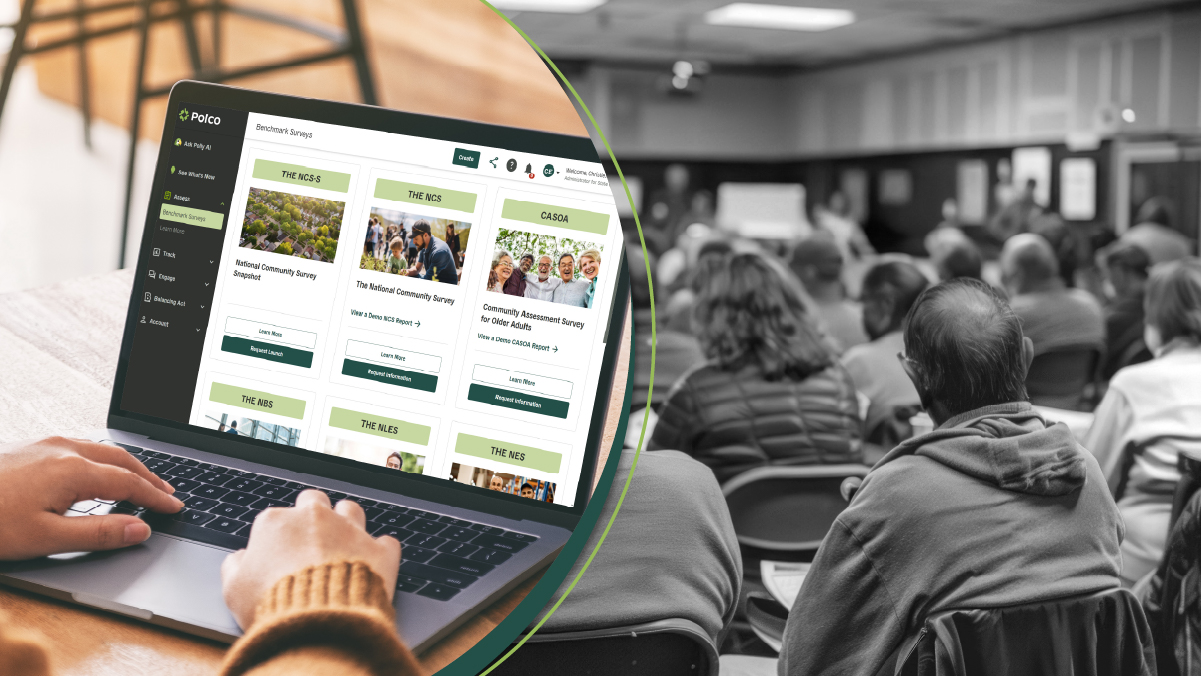Five Ways to Ensure Successful Online Outreach
By NRC on January 28, 2020

- By Cory Poris Plasch -
Opportunities to reach residents are more plentiful than ever before. In fact, according to Pew Research, 90% of American adults are online. No wonder more and more nonprofit and public sector organizations are using online surveys and polls to gather feedback.
Yet, while internet access is increasing, the number of responses to both analog and digital surveys has decreased over time, industry-wide. This makes active, smart promotion and distribution plans doubly important for any survey or other public input endeavor.
So when evaluating your organization’s community outreach, how can you maximize responses from your stakeholders?
1. Create an Online Outreach Plan

A comprehensive engagement plan is key to any online outreach activity. Who are you trying to engage and how? What resources are available to you? Evaluate which publicity tools are available to you: website, social media outlets, newsletters, press releases, billing inserts and so on. What is your timeline for gathering input? What will you do with the input you receive? What staff are available to work on this critical piece of gathering feedback? What are your expectations for this project?
2. Set Reasonable Expectations
In a perfect world, every community survey would be a city-wide census of each adult resident. But in practice, time, resource and monetary costs would make pulling off such a herculean feat largely impossible for even the most advantaged jurisdictions.
For this reason, survey scientists will usually select a much smaller sample of the population and set response rate goals from that smaller sample. Statistics then makes it possible for a few hundred responses to accurately represent sentiments in a community of tens-of-thousands.
Online outreach opens the potential for more residents with internet access to respond. But the same practical limitations that lead researchers to survey samples are the same limitations that must be considered when setting your goals and expectations for opt-in engagement.
So it can be tempting to try engaging a certain blanket percentage of your overall population, but this is not the best determiner of successful engagement with your stakeholders.
Online engagement is best viewed as an extension of the public input section of municipal board meetings. Very few residents and other stakeholders take the time to attend these meetings. But digital platforms, like Polco’s online engagement tool, solve one common barrier - convenience. Instead of requiring all interested parties to attend a meeting on a Tuesday at 7 p.m., online platforms allow for input 24/7. Allowing for the schedule of the stakeholder greatly improves the volume of feedback you can expect. And as is the case with city council meetings, hot topics are likely to get more input than everyday issues. Finally, the total number of responses you can expect greatly relies on your promotion efforts.
Regardless of issue, with a good outreach plan you can count on hearing from an increased number of stakeholders by getting input online. You can also expect to hear from more representative voices in the community, not just the vocal few.
3. Reach Additional Populations

Online surveys and polls offer an excellent opportunity to open up the decision-making process to more of your constituents. Imagine that you have a park in your community and want public input on how the land should be used. Do residents want trails? A splash pad? Basketball hoops and soccer fields? You likely have many residents who want to give input. By developing and distributing an online parks survey, you can reach more diverse demographics in your community than through traditional methods alone.
Partner with trusted community leaders to help distribute your survey link. By working with community partners such as schools, PTA’s and daycare centers, recreation programs like Little League and adult softball leagues, the local Chamber of Commerce, senior centers, and even religious institutions, you can greatly increase the number of stakeholders who are willing to give input.
One barrier we often hear about is limited access of older adults to online surveys. But recent figures prove that most older adults are online. Data from Pew Research indicates that in 2019, 73% of adults 65 and older use the internet. That number has increased steadily over time, with a 7% increase just between 2018 and 2019.
Where the digital divide is a concern, many organizations choose to either provide paper surveys or kiosks in local senior centers and other locations where seniors congregate to gather data from this important demographic group.
4. Build a Panel

The initial response to a poll or question can be based on several things, including public interest in the topic and the community outreach strategy. The goal of an outreach plan is to continually increase the number of respondents over time, but not necessarily survey to survey as topics change. Polco allows communities to build subscribers. This subscribership should steadily increase as more people become aware that the organization is gathering input through the platform, on a regular basis.
5. Create a Representative Community Online

A challenge many communities find with polling through social media is the inability to determine location, age, or other respondent demographics. On certain topics, people outside of the organization’s service area may choose to participate in online surveys. Being able to differentiate those responses is crucial for some surveys or polls, and in other circumstances organizations may choose to weigh those responses differently. So verification of respondent location can be an important component of online surveys.
Demographic representativeness should be an ongoing goal. By determining who is responding, your organization can target those who are not. As respondents subscribe and follow you on Polco, their known demographic information is carried along as they answer new and follow-up questions. Results are seen live, so organizations can proactively target outreach efforts with even a single question to build a standing panel representative of the community overall.
The Best Measurement of Success
Gauging success of online survey and polling platforms looks different for each individual organization. A custom success plan should be drafted for each community.
The best way to know that your community engagement efforts are headed in the right direction is tracking your own trends over time. Understanding baseline analytics and results from your first online survey creates a pad to launch from. Measure your performance, then plan and aim for better results next time!
Related Articles
Popular posts
Sign-up for Updates
You May Also Like
These Related Stories

What Your Community Really Thinks (And Why Most Leaders Are Wrong)
.jpg)
Resident feedback guides Bloomington to address COVID-19 budget impacts, saving $390,000


